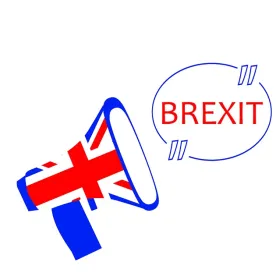Over the period since the rejection of the Withdrawal Agreement, the Prime Minister’s tactic has been to try to bring the pro-Brexit wing of the Conservative Party, and the Northern Ireland Democratic Unionists, back on side. No.10 appear to have been successful in whittling the pro-Brexit wing’s nominal resistance to the Withdrawal Agreement (which was very wide ranging at the time of the vote on 15th Jan) down to just the Northern Ireland backstop – the failsafe mechanism in the Withdrawal Agreement to ensure that there will be no hard border on the island of Ireland, but which the Pro-Brexit wing fear is a trap to keep the UK permanently in customs and regulatory alignment with the EU. Until yesterday morning, No.10 hoped to achieve this without attempting to renegotiate the Withdrawal Agreement, something the EU has been adamant is not on the cards. But No.10’s aim for a legally binding side agreement looked unlikely to bring the Brexiteers on side. So on Tuesday the PM announced that she was willing to go back to the EU and to seek changes to the Withdrawal Agreement. This – some would say desperate – volte face by the Prime Minister is very significant background to yesterday’s votes in Parliament.
The House of Commons voted on 7 amendments to the (neutrally worded) Government motion:
- Labour Party amendment to rule out “no deal” and require a permanent customs union, defeated by 327 votes to 296
- Scottish and Welsh National Parties amendment which notes Scotland and Wales voted to remain in the EU, calls for extension and Article 50 timetable and to rule out “no deal”, defeated by 327 votes to 39
- Former Attorney-General Dominic Grieve amendment to give Parliament six days to debate Brexit and put forward alternative plans, defeated by 321 votes to 301
- Labour front-bench Yvette Cooper amendment to create legal obligation on Government to extend Article 50 timetable unless a deal is approved by Parliament by 26 February, defeated by 321 votes to 298
- Labour Rachel Reeves amendment similar to Yvette Cooper but not legally binding, defeated by 322 votes to 290
- Conservative Caroline Spelman amendment to reject “no deal” Brexit (not legally binding), passed by 318 votes to 310
- Conservative Graham Brady amendment (with tacit Government backing) calling on Government to replace Northern Ireland backstop with “alternative arrangements”, and stating that with this change the Withdrawal Agreement would be accepted, passed by 317 votes to 301
The most significant of these amendments were 3, 4, 6 and 7. 3 and 4 were the mechanisms by which Parliament could take control of the Brexit process. The Prime Minister’s undertaking to seek to renegotiate the Withdrawal Agreement, by bringing the Brexiteers on side, combined with an undertaking to hold a new “meaningful vote” in about two weeks’ time, which kept a number of Ministers who would have resigned in order to support the Cooper amendment from doing so, saw these two amendments off. 6 is non-binding, but is an important reminder of where Parliamentary opinion sits if the Prime Minister fails to secure changes to the Withdrawal Agreement. 7 is being portrayed, perhaps with rather exuberant optimism, within the Conservative Party and pro-Brexit press as the Prime Minister’s mandate to secure changes to the Withdrawal Agreement. The wording of the amendment – “alternative arrangements” – deliberately picks up on the EU’s own language.
The Government’s narrow majority held up pretty well through the evening, a small number of Conservative rebels being compensated for by a dozen or so Labour MPs from strongly pro-Brexit constituencies voting with the Government in order not to be accused of voting against Brexit. Support for the Brady amendment (the only “positive” amendment to pass) was however a handful of votes lower than the Government majority against the other amendments (fewer Labour MPs supported it). And enough Conservatives supported the Spelman amendment to send the Government a clear message for the future.
So the action now passes to Brussels. EU Council President Donald Tusk has already responded to the Brady amendment by saying that the Withdrawal Agreement cannot be re-opened. Even if there were a willingness on the EU’s part to try to help secure a deal that will pass, it remains very unclear what is meant by “alternative arrangements”. So the Prime Minister’s task looks like a pretty tall order. But given the damage “no deal” is likely to do to both the UK and EU economies, and to some EU member states in particular, the EU will want to ensure that, however it couches its rejection of the UK’s attempt to re-open the Withdrawal Agreement, it also avoids any blame for “no deal” if that is where the process ends: scope perhaps for some creative “writing around” the Withdrawal Agreement? But would that be enough to keep the Brexiteers on side? The Government is set to return to the Commons probably around 14 February for a further “meaningful vote”, either on an amended version of the Withdrawal Agreement if they can secure that, or – unusually: Parliament generally does not vote twice on the same thing – on the existing Withdrawal Agreement if no amendments have been secured. If the latter, the truce in the Conservative Party is likely to end again.
On the plus side, the Prime Minister has re-established her majority and secured Parliamentary approval for an – albeit vague – proposal for approving the Withdrawal Agreement. But the price of doing so is an undertaking to achieve something which looks at best at the outer limit of achievable. It is hard to see what incentive the EU has to give the Prime Minister what she now needs: substantive changes to the text of the Withdrawal Agreement. First, many in the EU think the Withdrawal Agreement goes too far already. Second, they know that the full force of the anti-“no deal” majority has not yet materialized in Westminster. And third, it is hard to see how any alternative approach works for the Irish border unless the UK is willing to relax at least some “red lines”. At the moment, within the legally determined timetable, there remain only two options: the Withdrawal Agreement, or “no deal” Brexit. Commission President Juncker has hinted at a third, but it would involve UK membership of a permanent customs union, to be negotiated through the implementation period, and could only happen through the Withdrawal Agreement, but could create a guarantee that the backstop would never enter into force.
The Prime Minister has successfully managed to avoid the choice between a position the pro-Brexit wing of the Conservative Party could not accept, and a position which the pro-European wing of the Party could not accept. But that moment of choice is coming closer – in effect a choice between re-defining the UK’s red lines to secure a deal which could command substantial cross-party support but would be implacably opposed by the pro-Brexit wing of the Conservative Party, or continuing to try to produce a solution which the Brexiteers would support, but with the increased risk of a “no deal” Brexit. Opting for either path would greatly increase the chances of a general election, which could throw the deck of cards up in the air.




 />i
/>i

